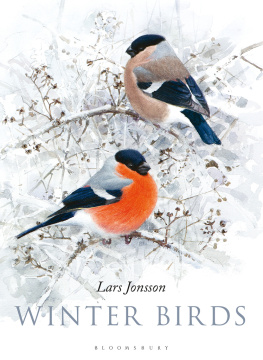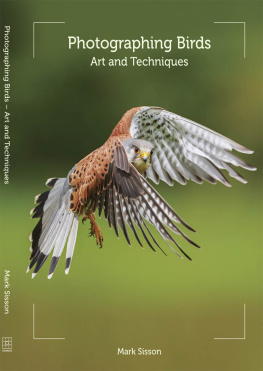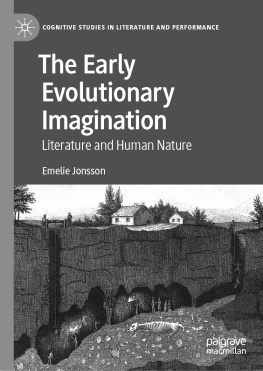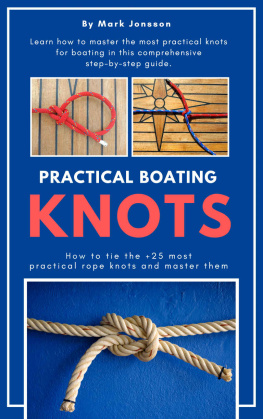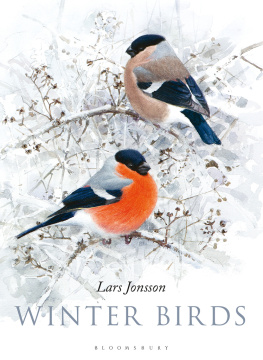Bloomsbury Natural History
An imprint of Bloomsbury Publishing Plc
| 50 Bedford Square | 1385 Broadway |
| London | New York |
| WC1B 3DP | NY 10018 |
| UK | USA |
www.bloomsbury.com
This electronic edition published in 2017 by Bloomsbury Publishing Plc
BLOOMSBURY and the Diana logo are trademarks of Bloomsbury Publishing Plc
First published by Bonnier Fakta, Stockholm, Sweden.
Published in the United Kingdom in 2017 by Bloomsbury Publishing.
2015 Lars Jonsson
Graphic design: Lars Jonsson & Annika Lyth
English language translation David A. Christie, 2017
Lars Jonsson has asserted his right under the Copyright, Designs and Patents Act, 1988, to be identified as Author of this work.
All rights reserved
You may not copy, distribute, transmit, reproduce or otherwise make available this publication (or any part of it) in any form, or by any means (including without limitation electronic, digital, optical, mechanical, photocopying, printing, recording or otherwise), without the prior written permission of the publisher. Any person who does any unauthorised act in relation to this publication may be liable to criminal prosecution and civil claims for damages.
No responsibility for loss caused to any individual or organization acting on or refraining from action as a result of the material in this publication can be accepted by Bloomsbury or the author.
British Library Cataloguing-in-Publication Data
A catalogue record for this book is available from the British Library.
ISBN: 978-1-4729-4281-4 (HB)
ISBN: 978-1-4729-4279-1 (eBook)
ISBN: 978-1-4729-4280-7 (ePDF)
To find out more about our authors and their books please visit www.bloomsbury.com where you will find extracts, author interviews and details of forthcoming events, and to be the first to hear about latest releases and special offers, sign up for our newsletters.


CONTENTS

FOREWORD
UNTIL NOW, MY WORK has concentrated on field guides. I worked my way systematically through all the bird species of Europe. Five volumes during the 1970s, arranged according to habitat or biogeographical regions, were combined into an identification guide in the 1980s. I remember, but chose to forget, how burdensome things can become at the end of this kind of work, when deadlines are approaching and just a few details are missing details which, in the event, develop into a minor treatise.
In this book, my idea was to give an account of my impressions of bird species which could easily be seen from my studio window during the winter months. A simple book about a few species, with pictures which I have sketched out on the spot. It began with the Greenfinch; it was interest in and studies of different but quite normal Greenfinches that got me going. I wanted to show variations, expressions and colours of single individuals. After a couple of years of Greenfinch painting and studies I began to see a structure, how the work could be done. The problem was that there were 58 species missing which could all be given the same attention, which all had as many interesting differences and expressions which I considered worth showing and time was passing. A few days before the planned printing I find myself absorbed by the Fieldfares which have just arrived from the north, see new faces, find new characters which must be incorporated. That the book was completed is a wonder.
I wish first to thank my wife, Ragnhild, for her understanding and patience when I once more disappeared into a lengthy project. Thanks also to Martin, Annika and Pontus at the publishers for their patience and their gentle guidance towards the end result.
Lars Jonsson
Hamra, 11 november 2015

INTRODUCTION

LUCIA, 13 DECEMBER 2012. Over the last few days the snow cover has slowly increased and now a good 20 centimetres of snow lies over the landscape. It was 5 degrees below during the night and it feels as if the thermometer will stay well below zero. The sky is lead-grey and, according to the mornings weather forecast, there may be a little snow from the east during the day. I chose to put on overtrousers, as the route down towards the sea is unploughed after Lennart dmans farm. It will be a bit of a plod to make ones way down to the coastal meadows.
Now I am thinking of winter birds and the south Gotland countryside. The landscape is wintry and graphic. The light is not managing to penetrate properly and I am looking at the snow and trying to compare it with how a white surface would appear in March or April, the sort of thing that artists sometimes occupy themselves with how white is white really?
White fields bordered by hedgerows of sloe, hawthorn and occasional crab apples. The snow is lying on the branches and only near the tips has the light breeze brushed out the twigs. Perched in our tangled honeysuckle bush is a small group of House Sparrows, pondering over what the day may bring. I placed a few hemp seeds on the wall there yesterday, but those not yet eaten are now covered by snow. House Sparrows in a winter bush are probably what I imagine to be the most wintry of all everyday bird scenes, a good start. Yesterday I logged on to the Swedish Ornithological Unions home page and downloaded the previous years top 30 Winter birds on our doorstep. The union requests that Swedish people send in details of which birds they see at their birdfeeders during the last weekend in January. Nineteen-thousand birdtables have been counted and all the different species and their numbers combined into a national list showing the most common birds at seed-dispensers and fatballs across Sweden. This could be a good starting point in deciding which birds I should include in this book. But I allow myself the liberty of a personal choice and throw in some species which I particularly like and which I associate with winter.
Every year the lists are headed by the Great Tit, the most frequent of all birdtable visitors. This is due primarily to the fact that it is both numerous and generally widespread, but perhaps also that it does not hesitate to visit a solitary fatball or a small dispenser with sunflower seeds suspended from a window-ledge or balcony. The other places at the head of the list are taken by Tree Sparrow, Greenfinch, Yellowhammer, Blue Tit and Blackbird. Their relative positions have changed since the inventory began, in 2006, but the top 30 always include all those species which we associate with the winter birdtable: Nuthatch, Bullfinch, House Sparrow, Brambling and so on.
When I walk around the cowsheds and out on to the road, five Goldfinches are perched in some withered chicory plants along the wayside. This rather cheers me, partly because they turned up right now, partly because it reminds me that the species is in fact on the list of top species immediately below the twenty mark.

